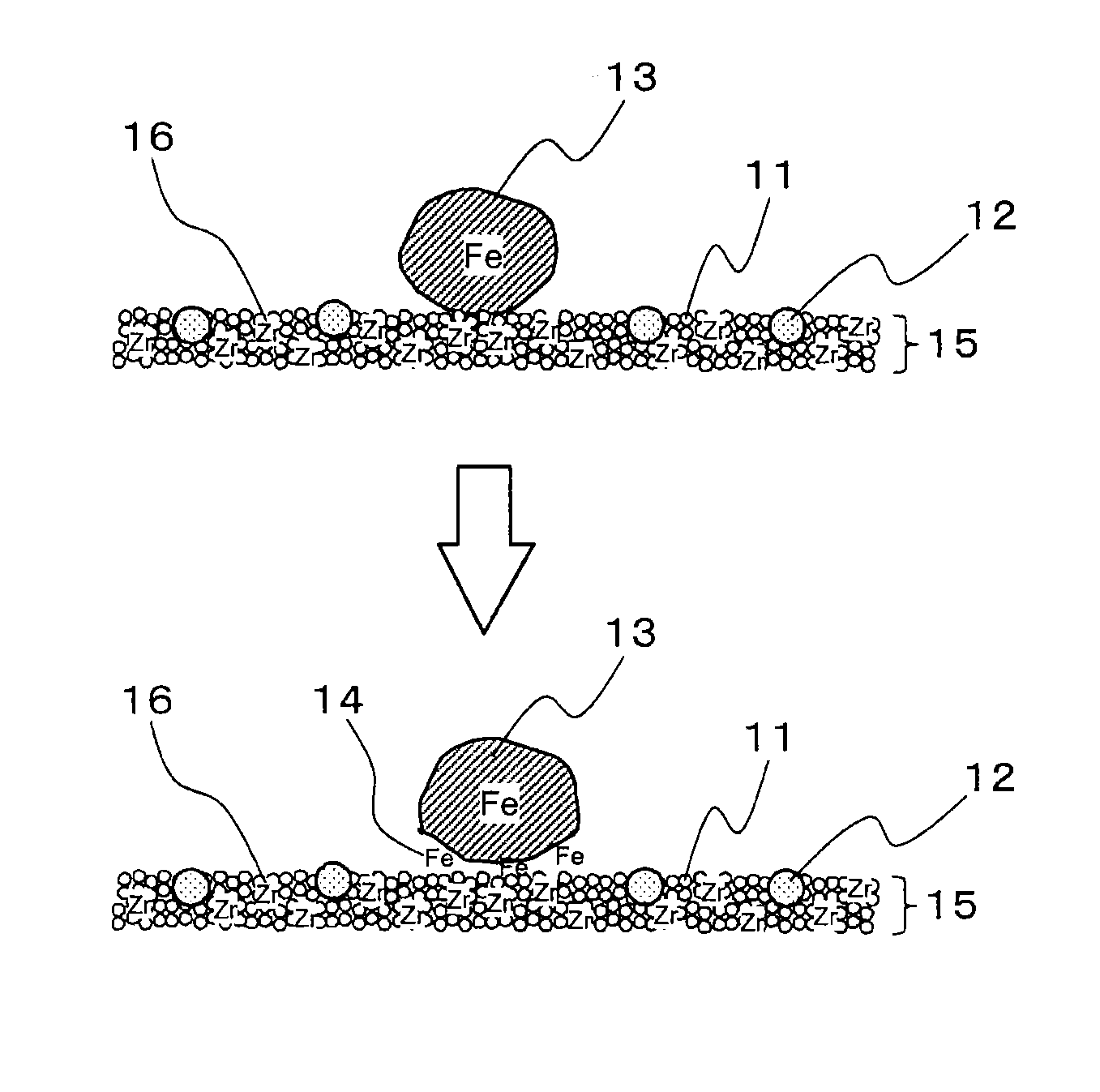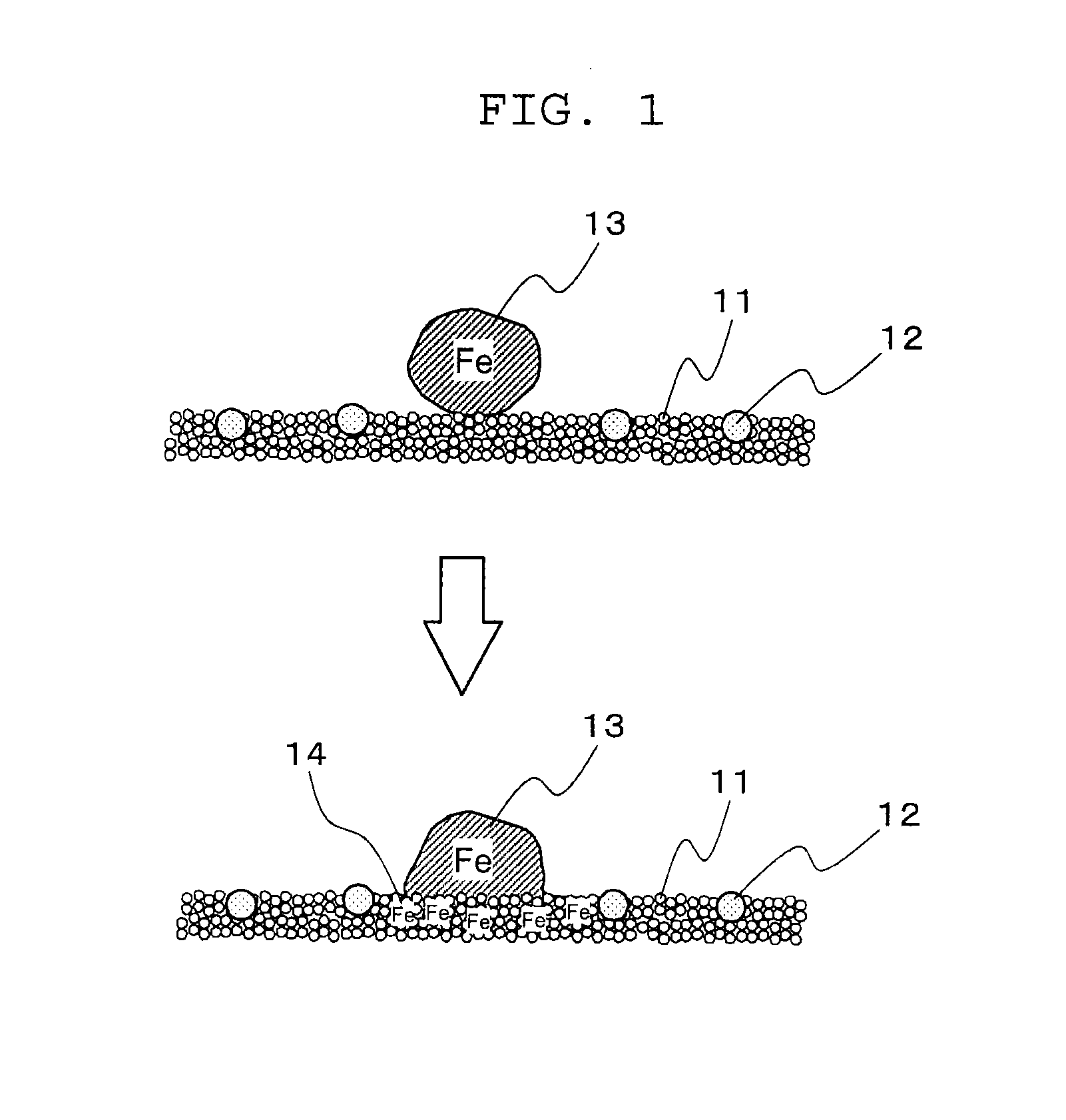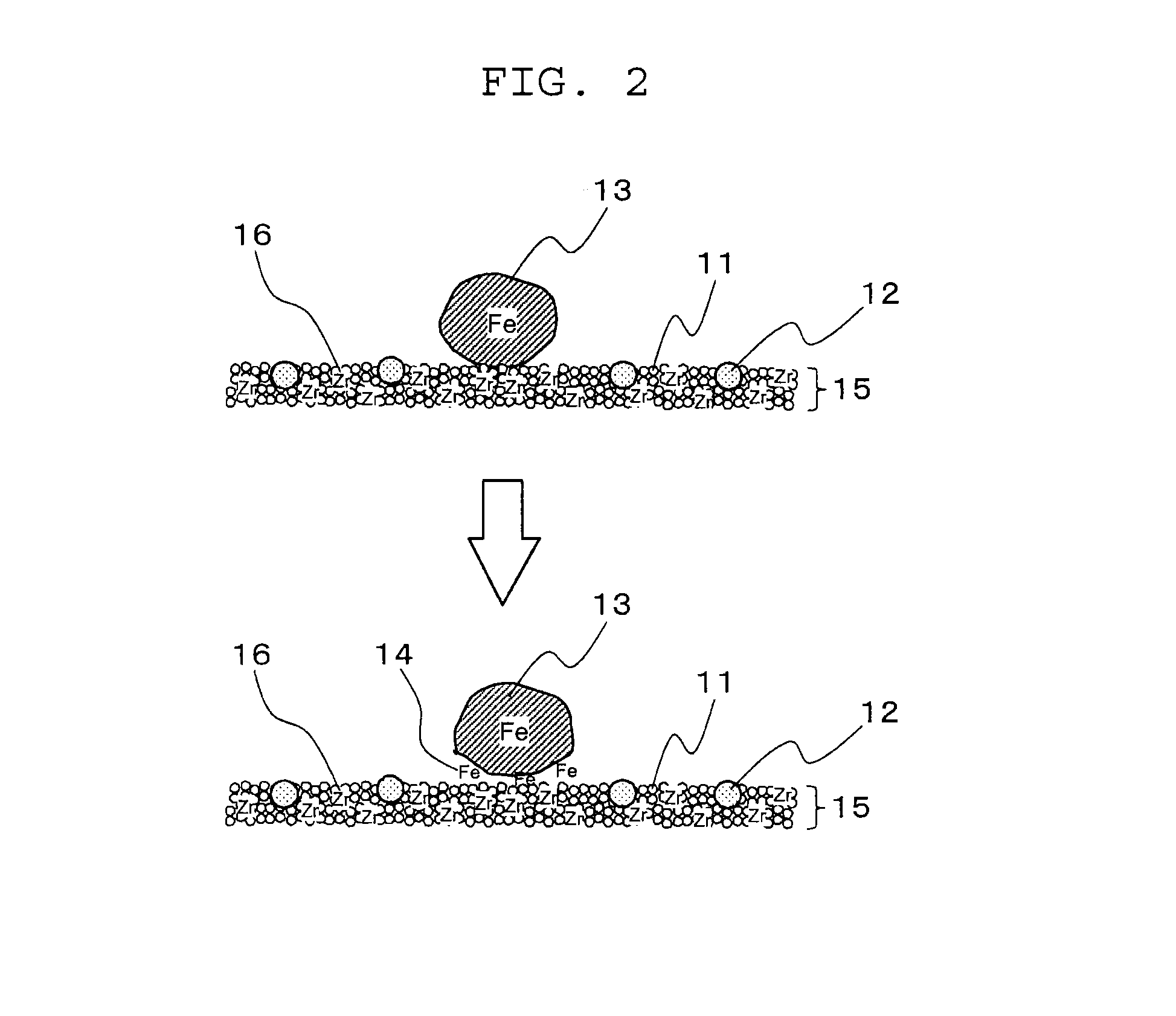Antifouling coating, heat exchanger provided with same, and method for manufacturing heat exchanger
- Summary
- Abstract
- Description
- Claims
- Application Information
AI Technical Summary
Benefits of technology
Problems solved by technology
Method used
Image
Examples
embodiment 1
[0021]At metal processing (welding, cutting, etc.) sites, enterprises where metal dust is handled, vehicles such as railway vehicles, and related facilities, metal particles such as particles of iron, copper, zinc, or alloys thereof, and particles to which such metal particles have adhered float in the air (such particles will be together referred to hereinbelow as “metal particles”). A coating constituted by an inorganic material, an organic material, or a combination thereof, in particular highly hydrophilic coating having a large number of polar groups, such as hydroxyl groups, on the surface, is degraded by adhesion of the metal particles, or the metal particles are easily firmly attached thereto.
[0022]FIG. 1 is a schematic diagram illustrating the degradation of the conventional coating caused by adhesion of metal particles. In the conventional coating depicted in FIG. 1, ultrafine silica particles 11 serving as fine inorganic particles are aggregated and fluororesin particles ...
embodiment 2
[0036]The antifouling coating according to Embodiment 2 of the present invention has a hydrophilic organic coating as a primary layer for an inorganic coating. Where the antifouling coating of such a form is used in a heat exchanger, good heat exchanger characteristics are obtained. As a result of forming a hydrophilic organic coating as a primary layer on the surface of a heat exchanger, for example, the surface of fins, forming a reaction layer from an aqueous solution comprising a zirconium compound which is at least one selected from zirconium chloride and zirconyl chloride on the hydrophilic organic coating, and forming an inorganic coating from a water-based coating composition comprising ultrafine silica particles on the reaction layer, or forming an inorganic coating from a water-based coating composition comprising ultrafine silica particles and a zirconium compound which is at least one selected from zirconium chloride and zirconyl chloride, it is possible to inhibit the c...
example 1
[0052]A water-based coating composition having the composition shown in Table 1 was prepared by stirring and mixing pure water, colloidal silica (Snowtex OXS manufactured by Nissan Kagaku Kogyo KK) comprising ultrafine silica particles with an average particle size of 6 nm, a PTFE dispersion with an average particle size of 150 nm, and zirconium chloride (12% by mass of the ultrafine silica particles), adding a nonionic surfactant (polyoxyethylene lauryl alkyl ester) at 0.1% by mass to the mixture, and further stirring and mixing.
[0053]The obtained water-based coating composition was coated on an aluminum fin material and dried with an air blower. The aluminum fin material with the coating formed thereon was wetted by dipping it into water, an iron powder with an average particle size of 45 μm was blown thereon, followed by drying with an air blower, and the adhesion state of the iron powder was observed. The adhesion state of the iron powder was visually evaluated. The evaluation u...
PUM
| Property | Measurement | Unit |
|---|---|---|
| Percent by mass | aaaaa | aaaaa |
| Percent by mass | aaaaa | aaaaa |
| Percent by mass | aaaaa | aaaaa |
Abstract
Description
Claims
Application Information
 Login to View More
Login to View More - R&D
- Intellectual Property
- Life Sciences
- Materials
- Tech Scout
- Unparalleled Data Quality
- Higher Quality Content
- 60% Fewer Hallucinations
Browse by: Latest US Patents, China's latest patents, Technical Efficacy Thesaurus, Application Domain, Technology Topic, Popular Technical Reports.
© 2025 PatSnap. All rights reserved.Legal|Privacy policy|Modern Slavery Act Transparency Statement|Sitemap|About US| Contact US: help@patsnap.com



